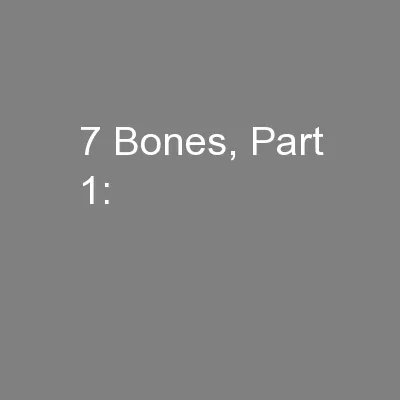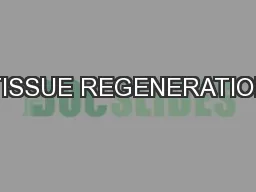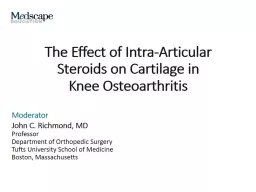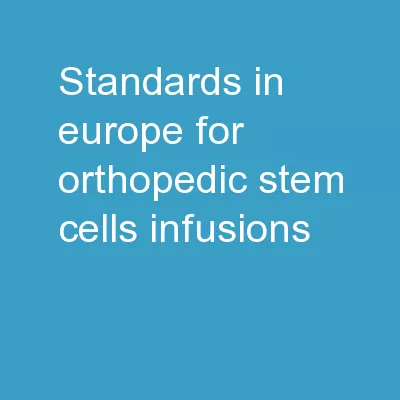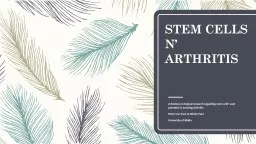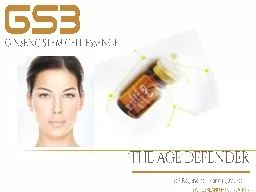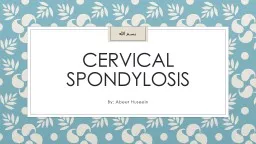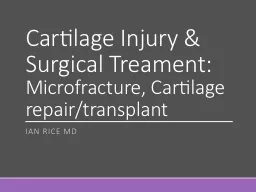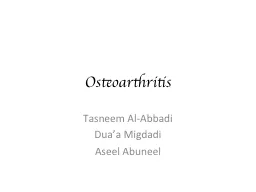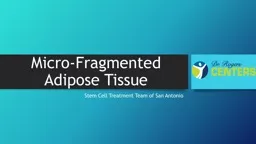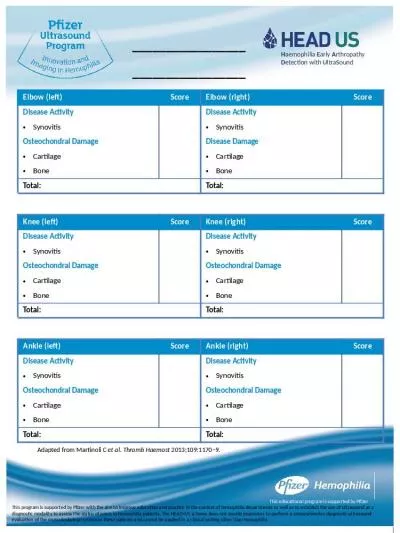PPT-Stem Cell Therapy: articular cartilage and intervertebral disc regeneration
Author : elise | Published Date : 2022-04-06
Benjamin Bonte MD Interventional pain fellow Hudson Medical group 762018 Outline Stem cells Cartilage degeneration in osteoarthritis Stem cells in cartilage regeneration
Presentation Embed Code
Download Presentation
Download Presentation The PPT/PDF document "Stem Cell Therapy: articular cartilage ..." is the property of its rightful owner. Permission is granted to download and print the materials on this website for personal, non-commercial use only, and to display it on your personal computer provided you do not modify the materials and that you retain all copyright notices contained in the materials. By downloading content from our website, you accept the terms of this agreement.
Stem Cell Therapy: articular cartilage and intervertebral disc regeneration: Transcript
Download Rules Of Document
"Stem Cell Therapy: articular cartilage and intervertebral disc regeneration"The content belongs to its owner. You may download and print it for personal use, without modification, and keep all copyright notices. By downloading, you agree to these terms.
Related Documents


